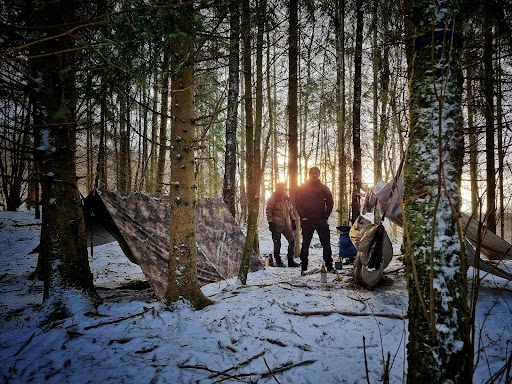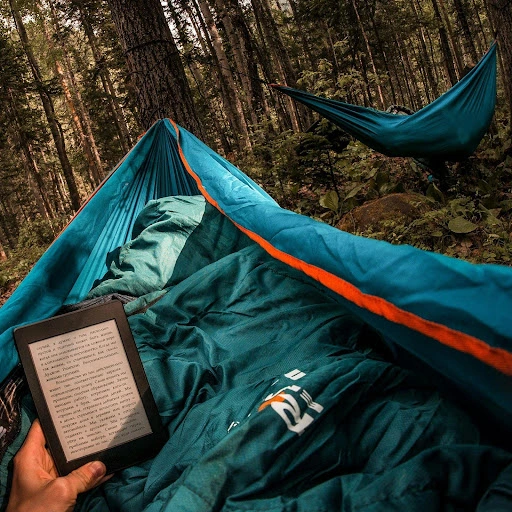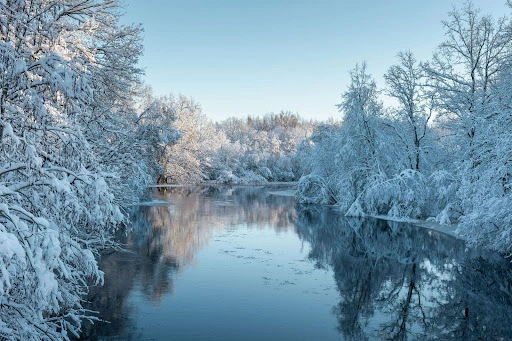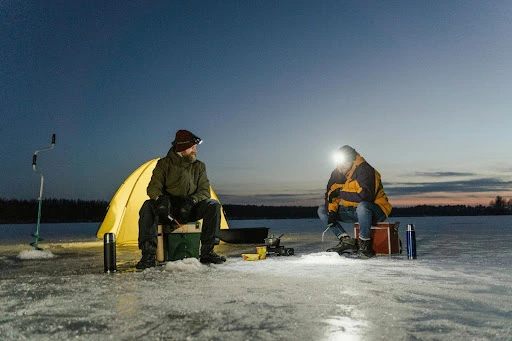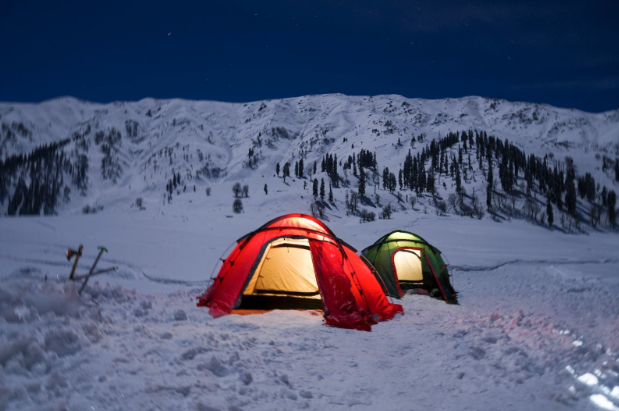Winter hammock camping is a unique type of adventure. Picture this: instead of enduring the icy chill of cold, hard ground, you’re gently cradled in a cozy, suspended cocoon. The wind may rustle outside, but you’re nestled above it all, warm and at ease. No stiff backs, no frozen tents—just the simple pleasure of being elevated, surrounded by the stillness of a winter landscape.
It’s a unique blend of comfort and exhilaration, perfect for those who crave both the serenity and the challenge of camping in the colder months. This is hammock camping in winter—a truly unforgettable experience.
But staying warm and comfortable in sub-zero conditions requires preparation and the right gear. Hammocks bring their own set of challenges to winter camping that have to be addressed for you to be safe and enjoy your trip too.
Table of Contents
Why Try Hammock Camping in the Winter?
Many people turn to hammock camping for various reasons, but the two most common are the unique experience it offers compared to traditional tent camping and the compact, travel-friendly nature of the gear.
Sleeping elevated in a hammock keeps you off the cold, frozen ground, where temperature transfer can quickly sap your warmth. Hammocks help eliminate that discomfort and make for a more restful night’s sleep.
During winter, you often have to deal with damp or snow-covered ground. Hammocks eliminate the need to clear snow or worry about a dry spot for a tent, making setup easier and cleaner.
Hammocks are adaptable, allowing you to camp in places where pitching a tent may not be possible, like steep slopes, rocky terrain, or densely wooded areas.
Challenges of Winter Hammock Camping (and How to Overcome Them)
Here’s a closer look at the main hurdles you might face if you’re new to hammock camping and solutions that will help overcome them.
Staying Warm in Cold Weather
One of the biggest challenges of winter hammock camping is staying warm. Unlike a tent, a hammock suspends you in the air, meaning you’re more exposed to cold temperatures. The lack of ground insulation can make it harder to retain body heat without the right gear.
How to tackle it:
- Invest in proper insulation: Underquilts and top quilts are your best friends for cold-weather hammock camping. They provide targeted insulation beneath and above you, where sleeping bags alone may fall short. Think of them as really fluffy sleeping bags that wrap around your hammock.
- Layer up smartly: Wear moisture-wicking base layers, followed by insulating mid-layers and a weatherproof outer layer. Keep a hat, gloves, and wool socks handy to keep extremities warm.
- Use a sleeping pad: If you don’t have an underquilt, a sleeping pad can act as an effective buffer from the cold air below. Your shoulders and butt might get chilly during the night if you are using a pad.
Wind Exposure
Hammocks, while cozy, tend to leave you more exposed to the wind compared to a tent. Those chilly gusts can steal precious body heat from underneath you.
How to tackle it:
- Choose the right campsite: Look for naturally sheltered areas, such as spots behind hills, dense tree lines, or large boulders, to block the wind.
- Set up a weatherproof tarp: A sturdy tarp pitched at an angle can act as a windbreak while also keeping snow or rain at bay. Use tarp doors or pull the edges close to the ground for added protection.
- Position your hammock wisely: Set your hammock lower to the ground for added shielding, and aim to angle it slightly into the wind for better aerodynamics.
Mastering the Learning Curve
Hammock camping, especially in winter, requires a bit more finesse compared to summer setups. From rigging your hammock securely to insulating it effectively, the skills necessary may take a little practice.
How to tackle it:
- Practice makes perfect: Set up your winter hammock system in your backyard or a nearby park before heading out. This gives you a safe environment to figure out tricky knots, tarp configurations, and optimal insulation techniques.
- Use adjustable hardware: Suspension systems with adjustable straps or whoopie slings can simplify the process. If you’re not happy with the standard system your hammock came with there are tons of YouTube videos showing you how to make your suspension system, many of them easy to do.
- Learn how to manage condensation: Your breath can create moisture that freezes overnight. Oftentimes you can wake up with your sleeping bag damp from your breath. Open up your tarp for ventilation when conditions allow, and fluff your insulation in the morning to keep it dry and effective.
Final Thoughts
Starting with winter hammock camping can feel a bit nerve-wracking—I won’t lie. There might be moments when you wonder if you’ve done everything right, and that’s completely normal.
After all, you’re out there in freezing temperatures, suspended in the air, relying on layers of puffy insulation to keep you warm. It can be intimidating at first! But here’s the beauty of it—once you’ve tackled a few trips and experienced just how toasty and comfortable a properly set up hammock can be (yes, even compared to a tent), the uncertainty melts away.
With every camp, your confidence grows, and soon enough, you’ll find yourself relishing the uniqueness of winter hammock camping, knowing you can do it.

